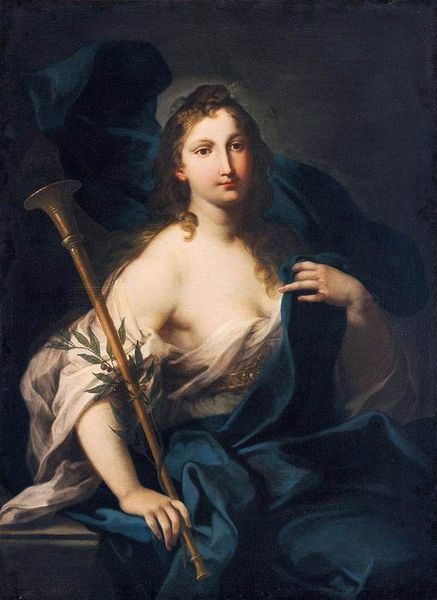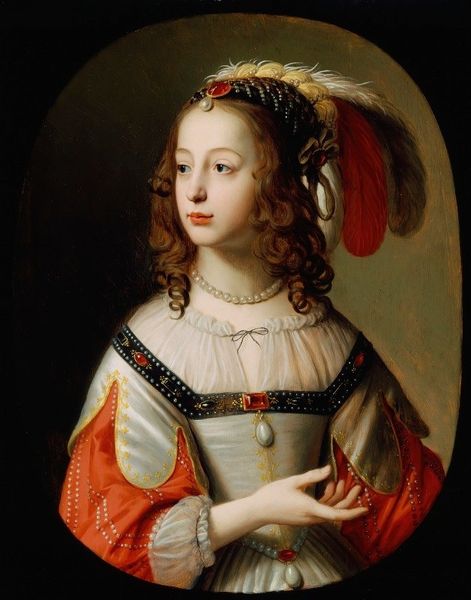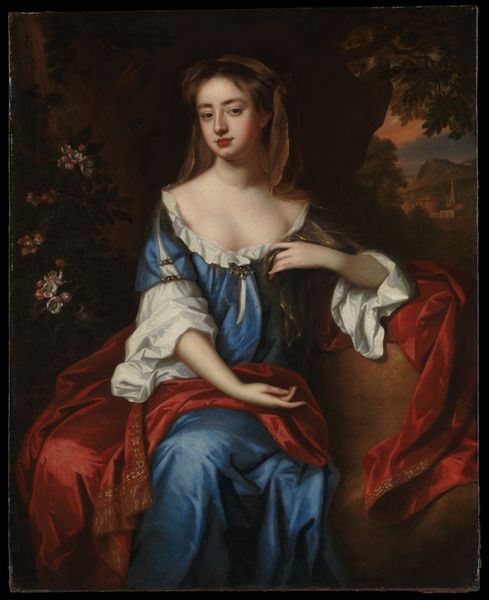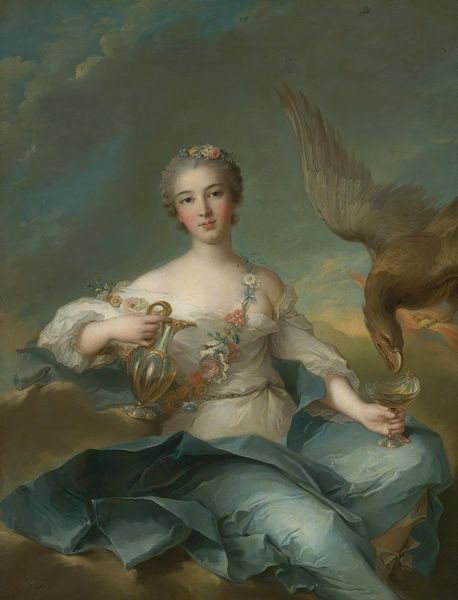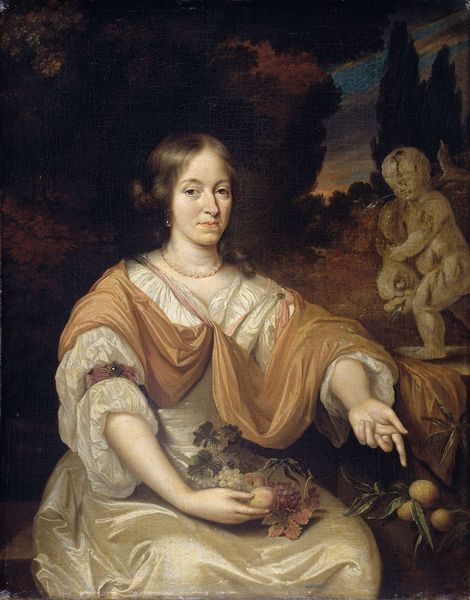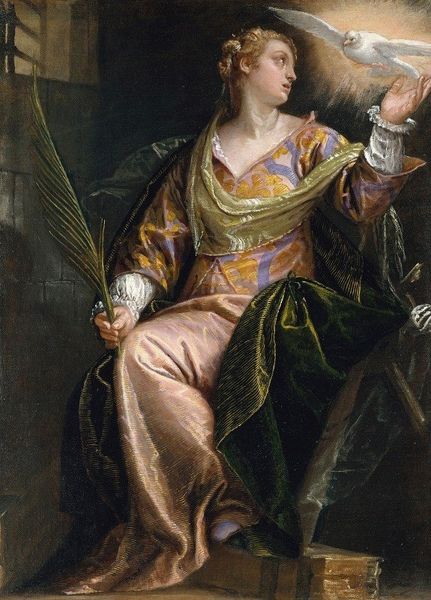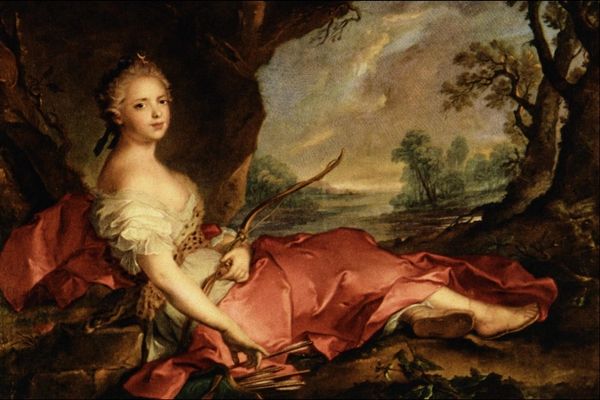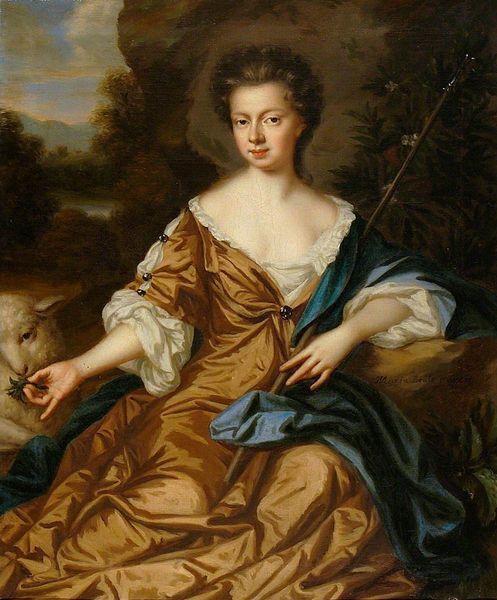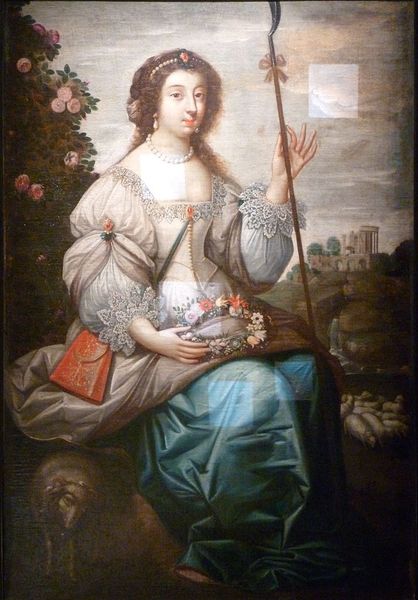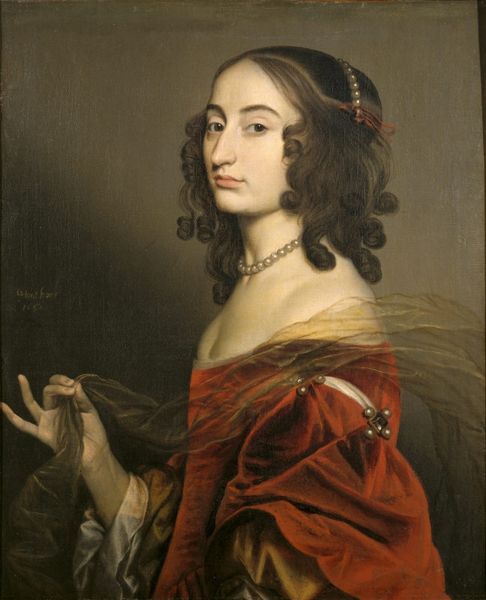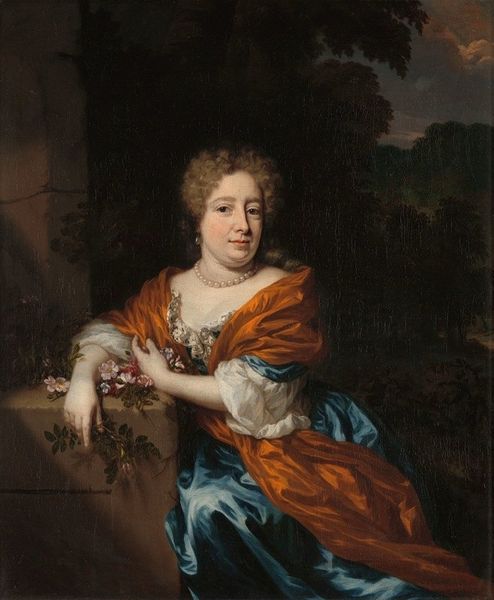
Elizabeth Panton, Later Lady Arundell of Wardour, as Saint Catherine 1689
0:00
0:00
Dimensions: support: 1250 x 1021 mm frame: 1442 x 1200 x 75 mm
Copyright: CC-BY-NC-ND 4.0 DEED, Photo: Tate
Editor: Here we see Benedetto Gennari's portrait, "Elizabeth Panton, Later Lady Arundell of Wardour, as Saint Catherine," whose date is unknown. I am drawn to how the artist used luxurious fabrics for her dress. What can you tell me about Gennari's approach to materials and his painting process? Curator: Note the careful rendering of the textile; it speaks to a patron class that valued material wealth. Consider how the pigments themselves were sourced, traded, and processed, reflecting global networks of consumption. How does that materiality shape our understanding of the subject's identity and status? Editor: That's fascinating! I had only considered the aesthetic value of the fabrics. I guess there is a whole system behind that. Curator: Precisely. Reflecting on the means of art production expands our view of art and society.
Comments
tate 7 months ago
⋮
http://www.tate.org.uk/art/artworks/gennari-elizabeth-panton-later-lady-arundell-of-wardour-as-saint-catherine-t06897
Join the conversation
Join millions of artists and users on Artera today and experience the ultimate creative platform.
tate 7 months ago
⋮
In 1681 Elizabeth Panton left England for France to escape the persecution she faced as a Roman Catholic. This work was painted there eight years later. As a symbol of her Catholic beliefs, artist Gennari presents Panton as St Catherine. St Catherine was killed for refusing to give up her faith. In one hand she holds a palm leaf, a symbol of martyrdom, peace and victory. In the other is the wheel on which she was to be tortured. According to legend, this miraculously broke at her touch. Gallery label, August 2019
